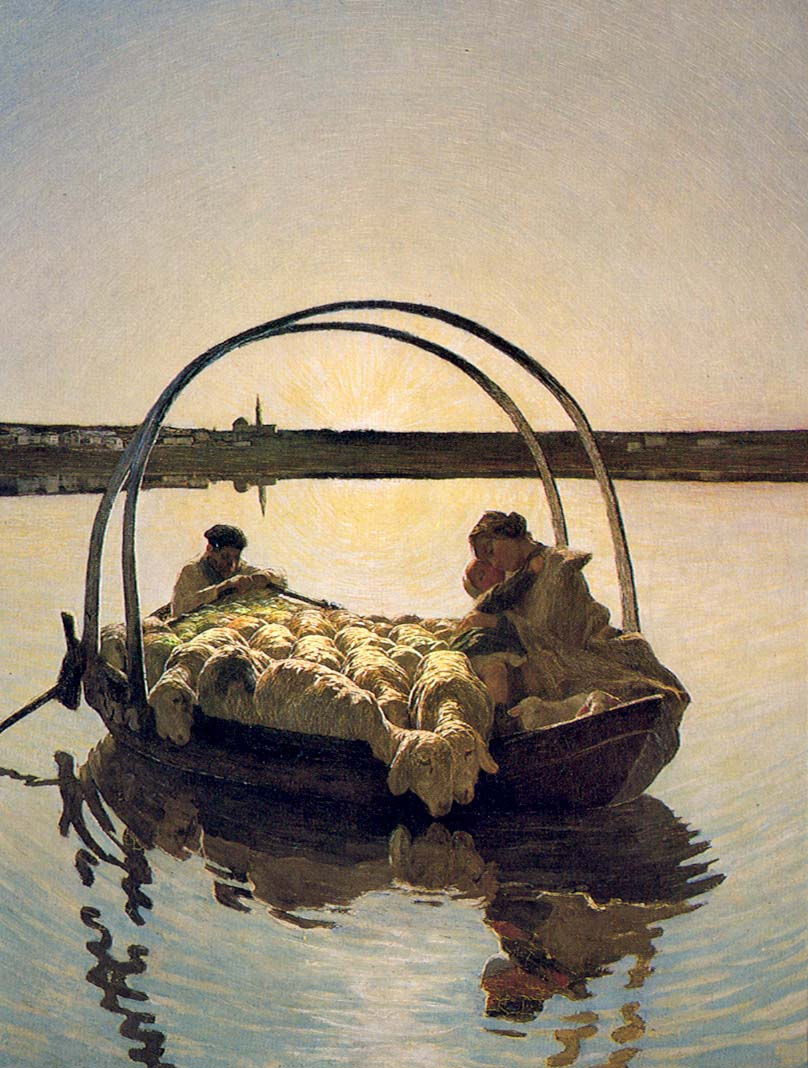January the 15th - Giovanni Segantini - Artist Birthday
- LaBelleEpoq

- Jan 16, 2023
- 2 min read
Giovanni Segantini
Italian, Swiss
Born: January 15, 1858
Arco, Italy
Died: September 28, 1899
Pontresina, Switzerland
Art Movement: Symbolism, Neo-Impressionism

Giovanni Segantini was an Italian painter known for his colourful, symbolist landscapes and genre scenes. He was greatly influenced by the Art Nouveau movement and the works of the Pre-Raphaelites, and many of his paintings contained allegorical or symbolic elements.
He often depicted the rugged beauty of the Alpine landscape, and he was particularly interested in the relationship between nature and humanity.

Born in Arco, in the Trentino region of Italy, Segantini had a very harsh childhood. His older brother died in a fire the same year he was born. His father, Francesco Segantini, was a tradesman, often travelling to look for work. Her mother plunged into a deep depression after the death of his older brother; thus, young Giovanni was left alone in poverty, hunger and limited education.

After the death of both parents in 1895, Giovanni was left under the tutelage of his older half-sister Irene. However, at age 7, he fled his hometown to live in the streets of Milan and had to subsist on his own from a very young age.

As an orphan, he got placed in the Marchiondi Reformatory, where the instructors noticed his drawing abilities and encouraged him. Segantini started studying art classes at the Brera Academy in 1874, where he met artists from Scapigliatura, a kind of Bohemian movement that included artists, poets, writers and musicians who thrived on living art as life.

In 1879 he met his friend Carlo Bugatti's sister Luigia Pierina, and they began a lifelong romance; due to his stateless status, he was unable to marry her legally, and they were forced to move from city to city to avoid repercussions and reprimands from the Catholic church very dominant at that time.

Giovanni Segantini rose to fame when one of his paintings, Ave Maria, took a gold medal at the 1883 World's Fair in Amsterdam. This allowed him, in the 1880s, to move to Switzerland, where he entirely focused on painting and equally started to study philosophy.
Segantini's works began to get attention at galleries and exhibitions throughout Europe, and commissioned projects of landscape paintings were made by nearby hotels. He needed to paint outdoors for this project, and he paced his work to finish the canvas, becoming sick by mid-September. Segantini died in 1899 at the age of 41 while working on a painting of the Swiss Alps.

Continue Reading and acquiring our books on AMZN: https://www.amazon.com/dp/B09431HBF7
By acquiring our books, artworks, certified prints or any merchandising through our Amazon shop or website, you become a Genuine Art Patron, directly contributing to allowing our Artists to thrive and build a long-lasting legacy in the Art World.























Comments